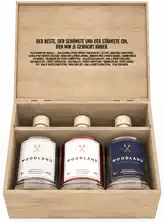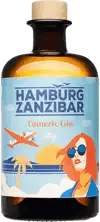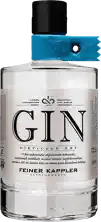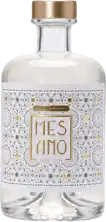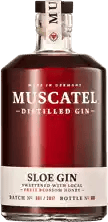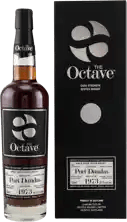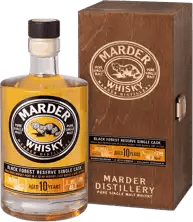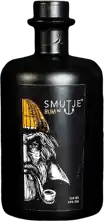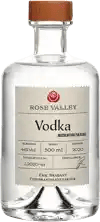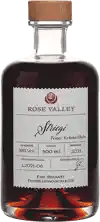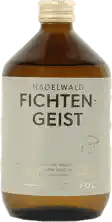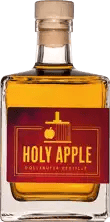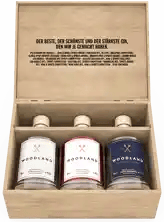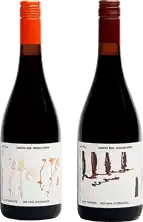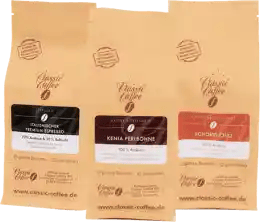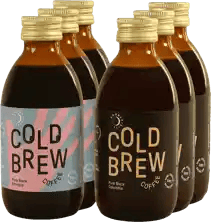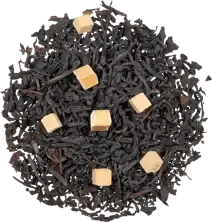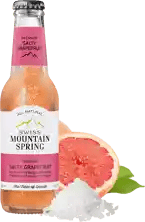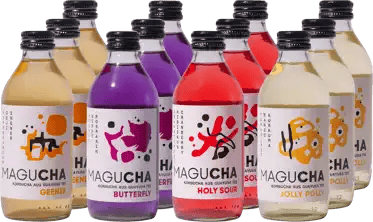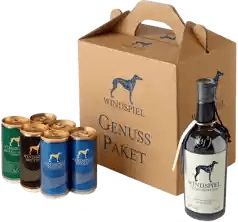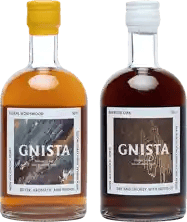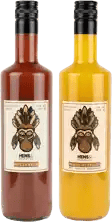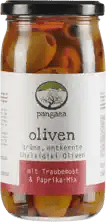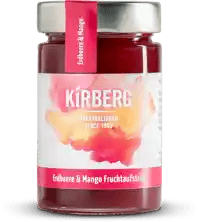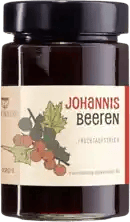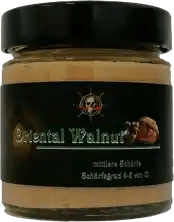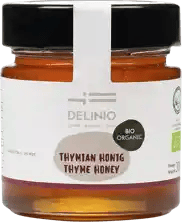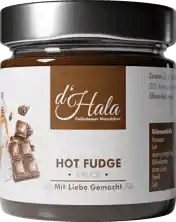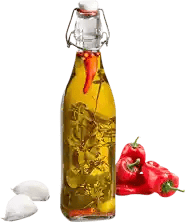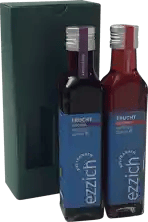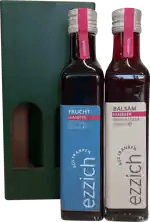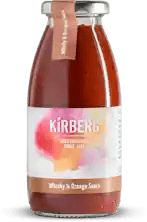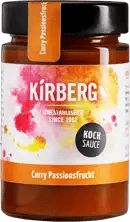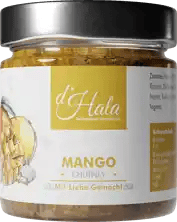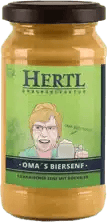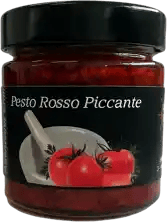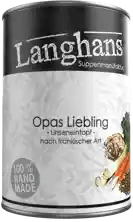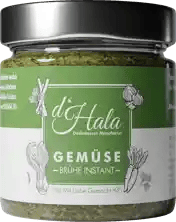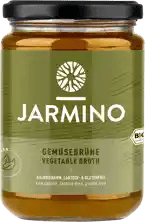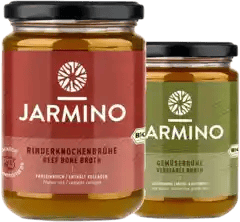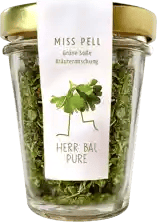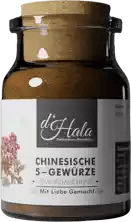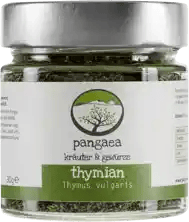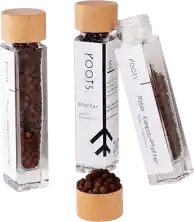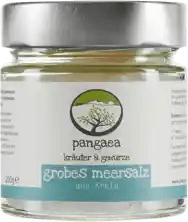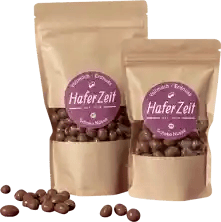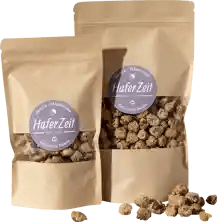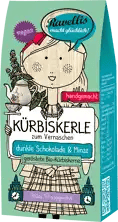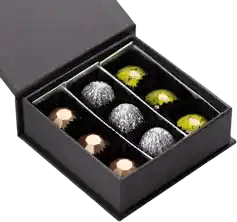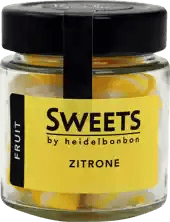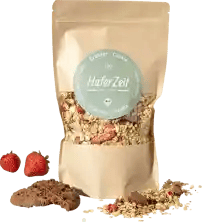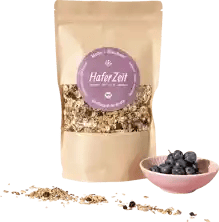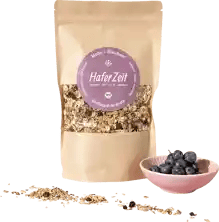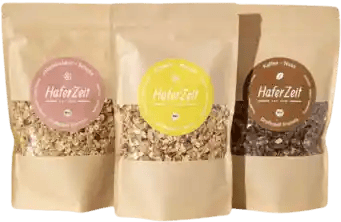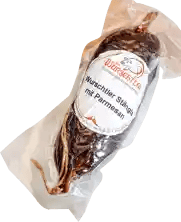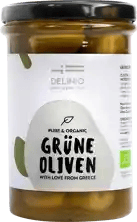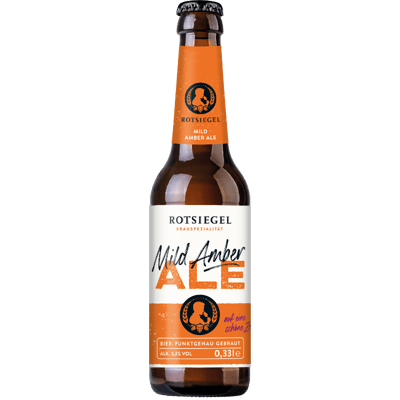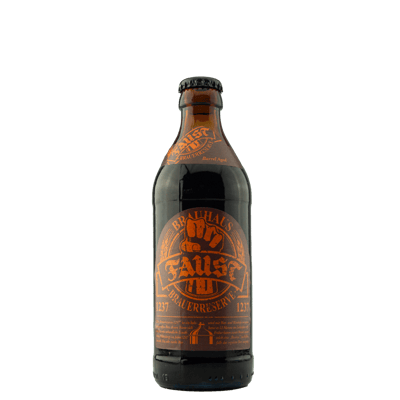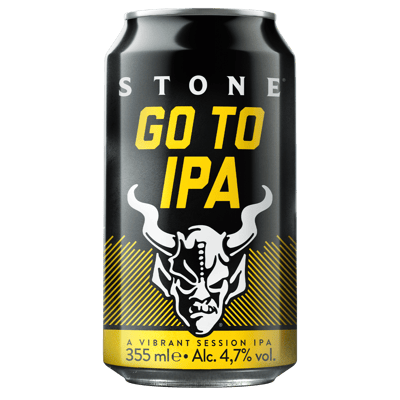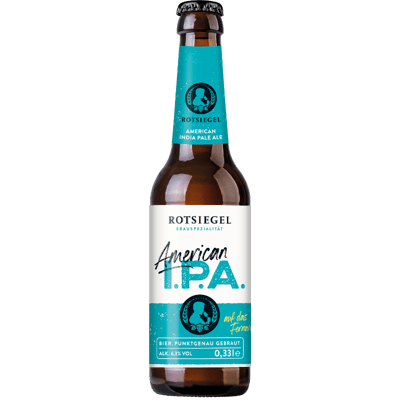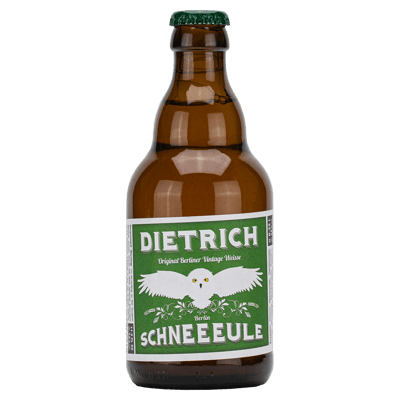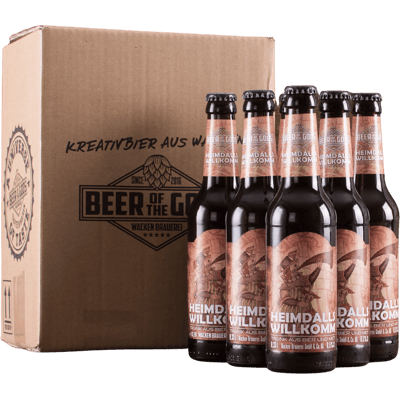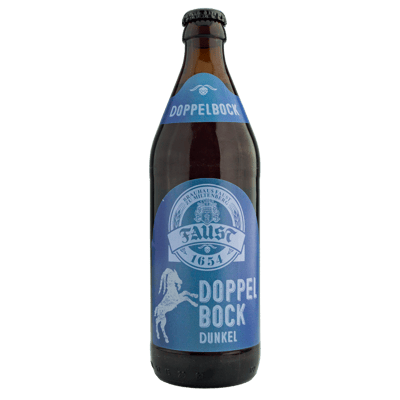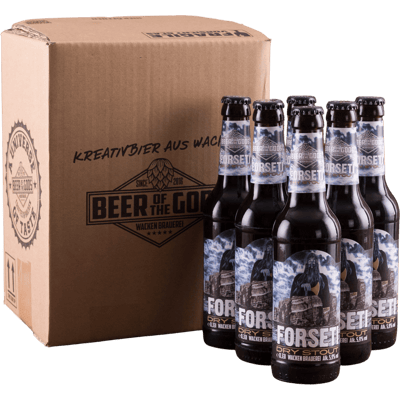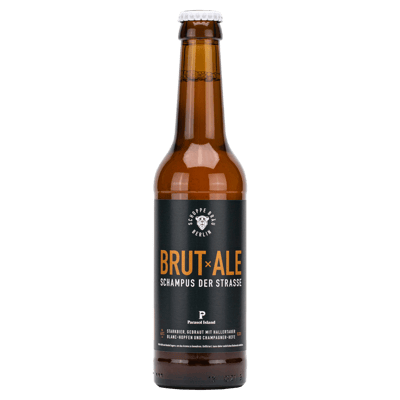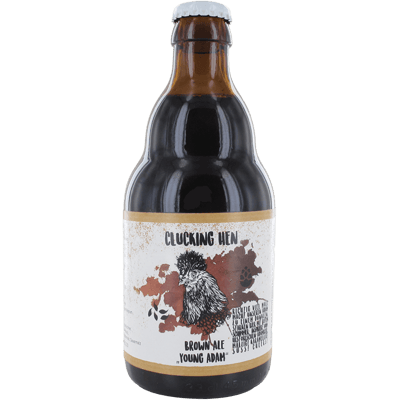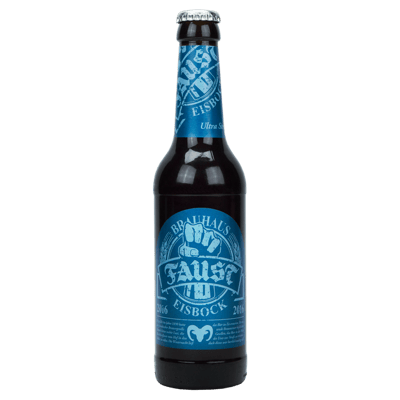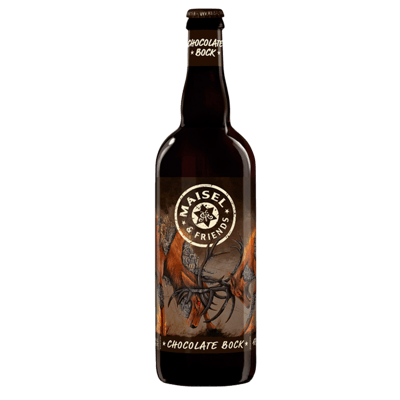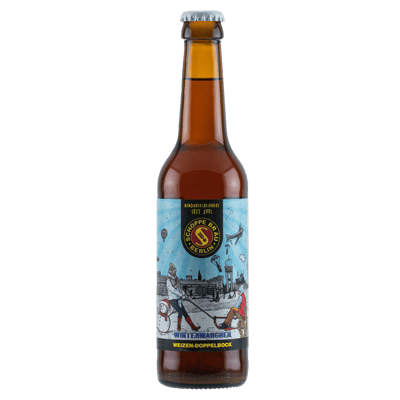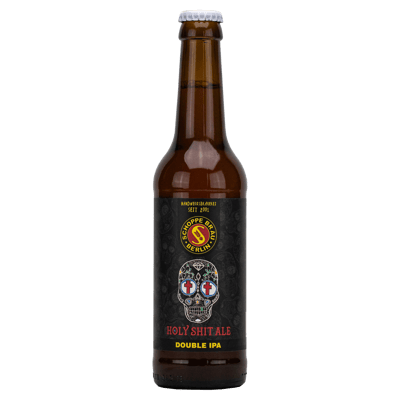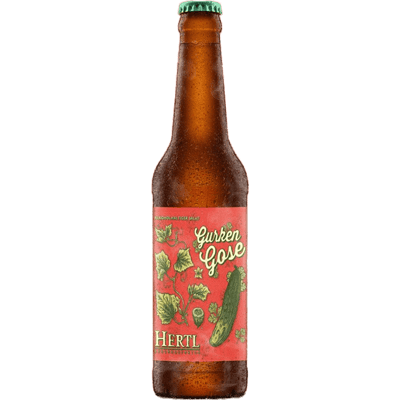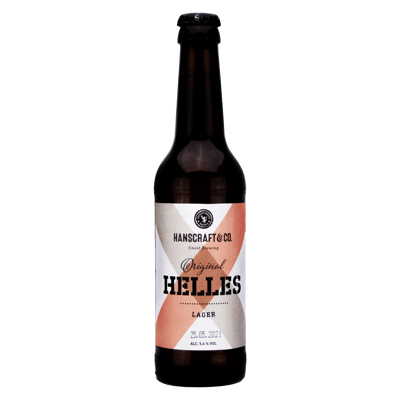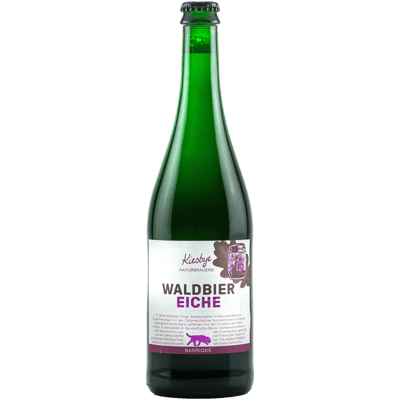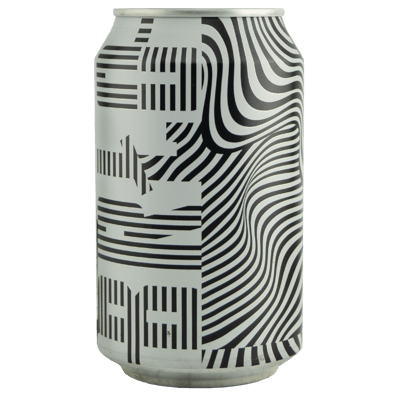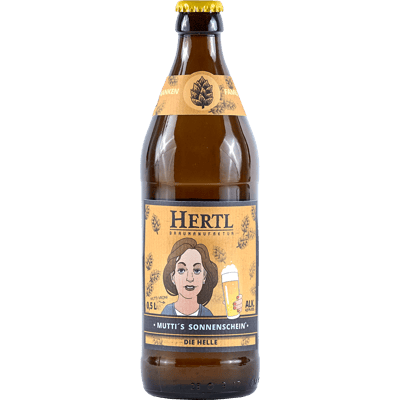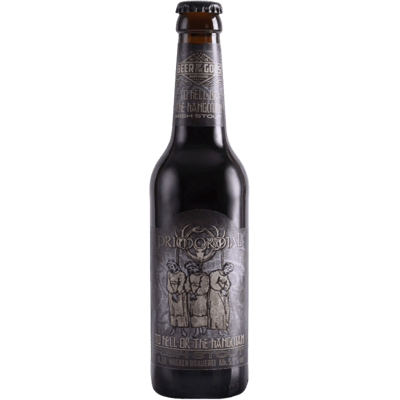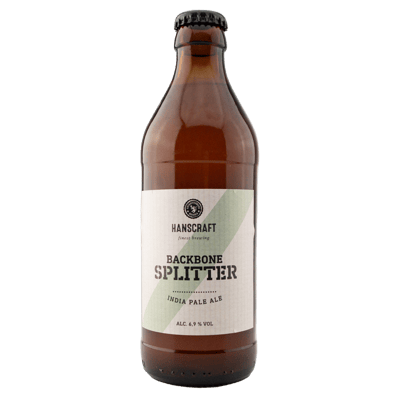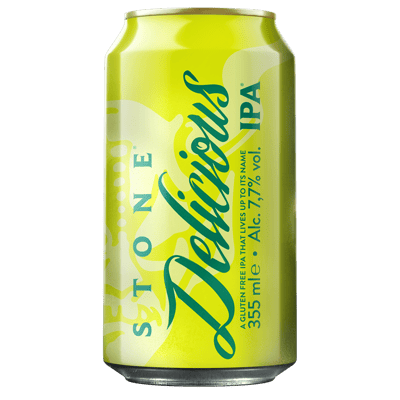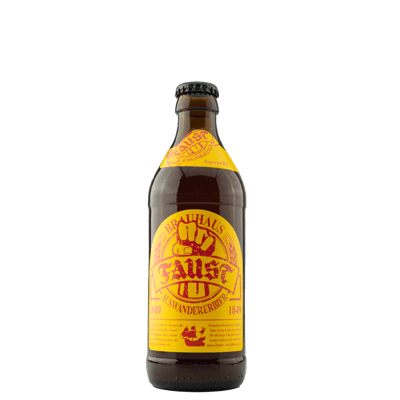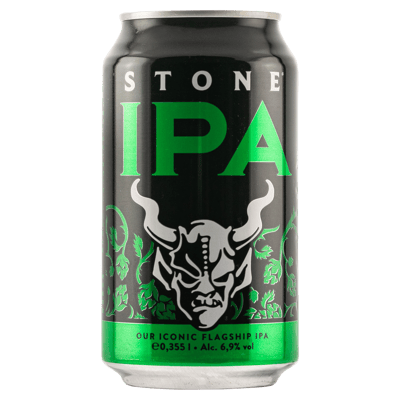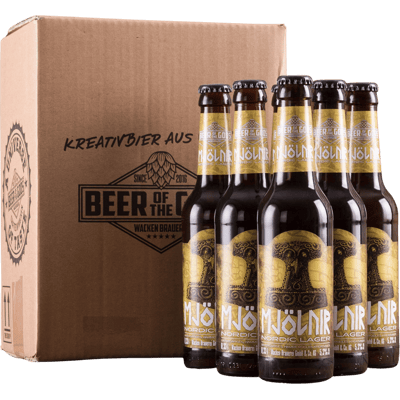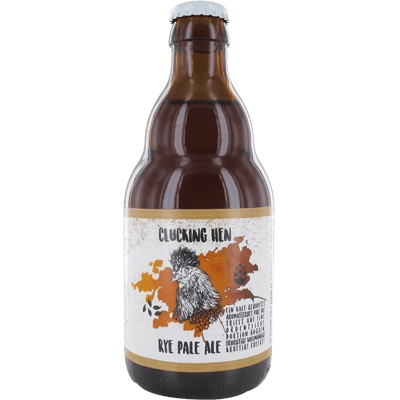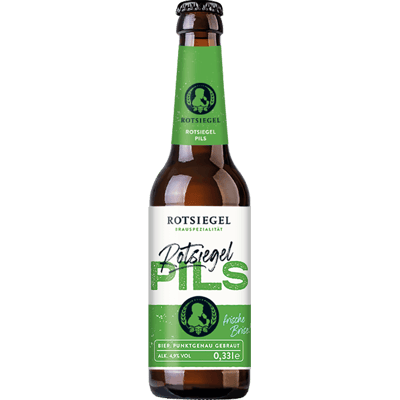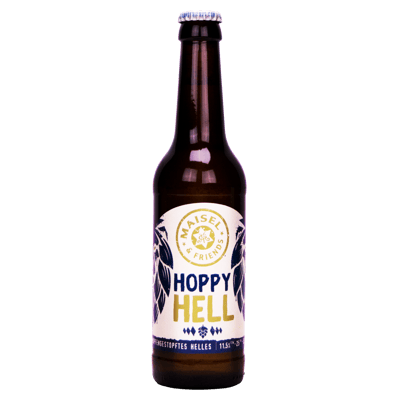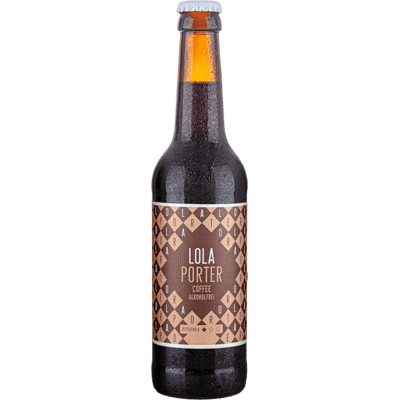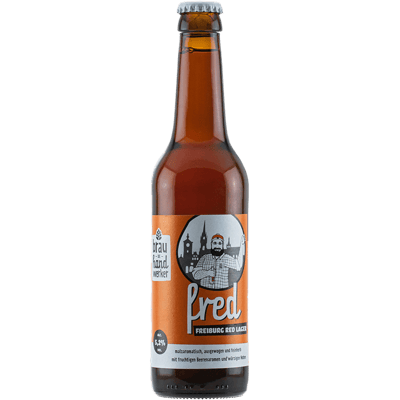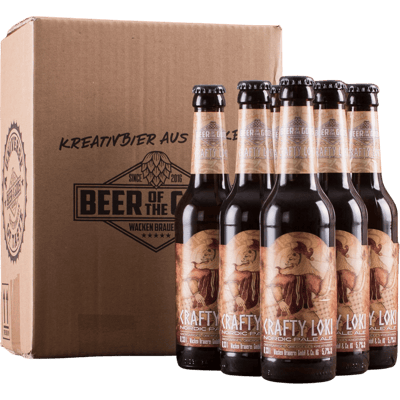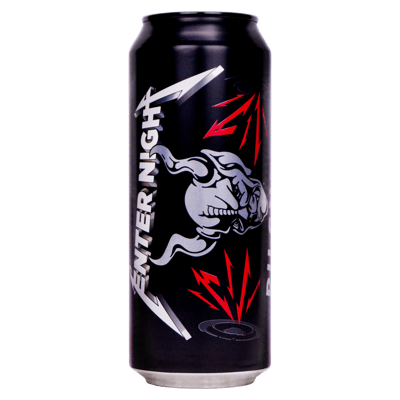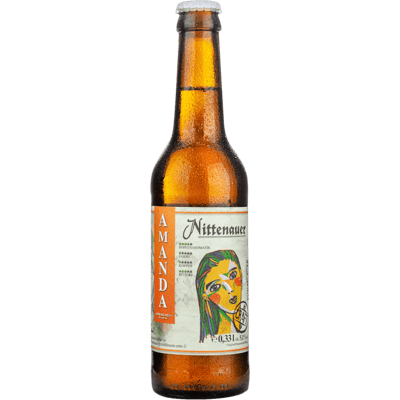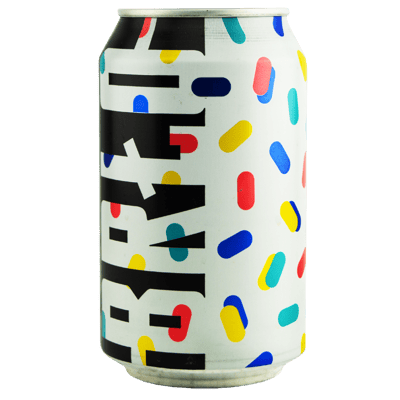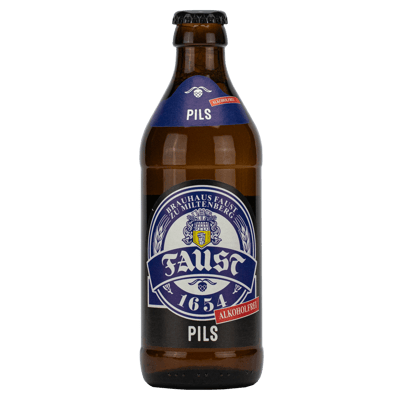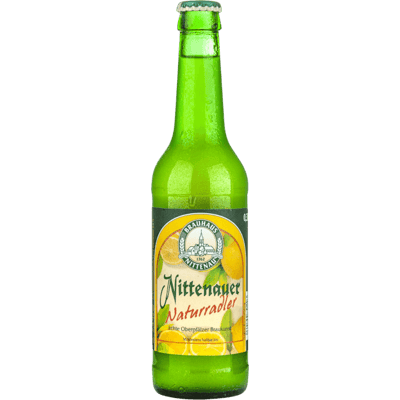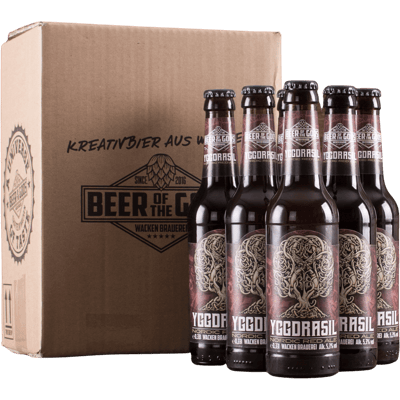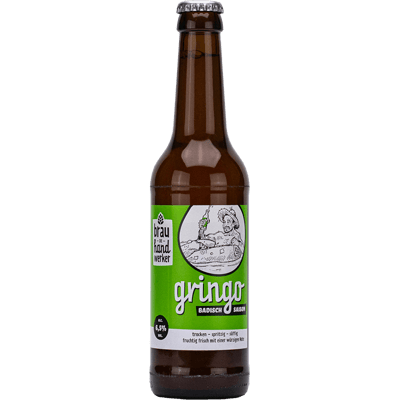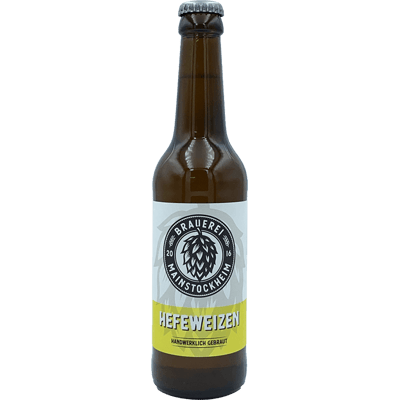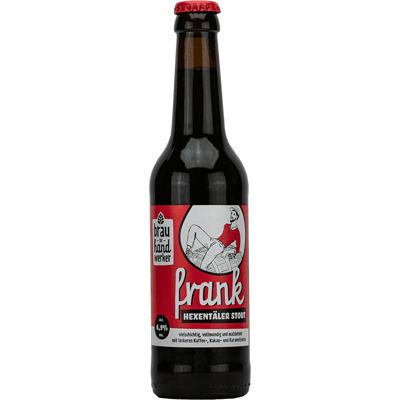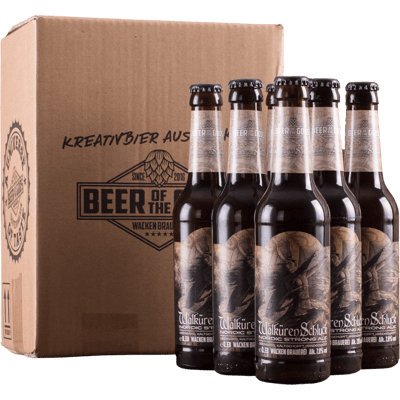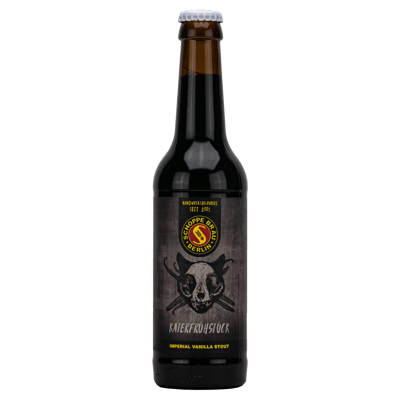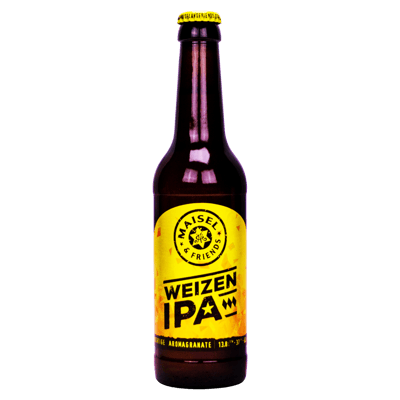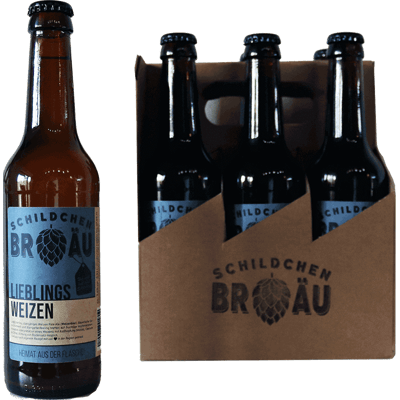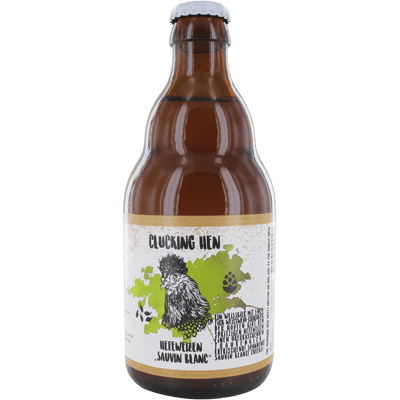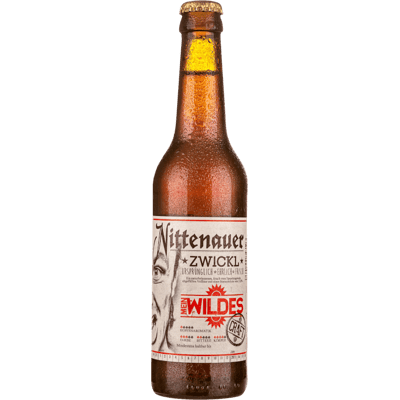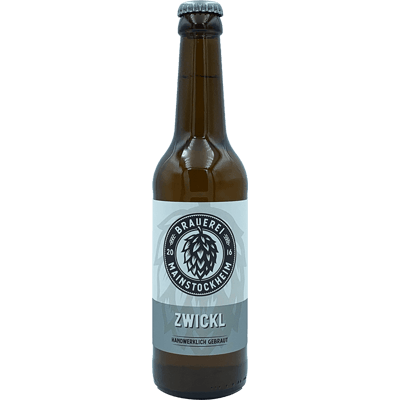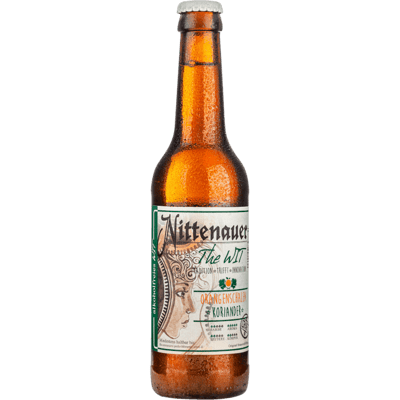Quality instead of quantity!
7,000 independent products
No mainstream
7,000 independent products
All types of beer at a glance - beer styles from A to Z
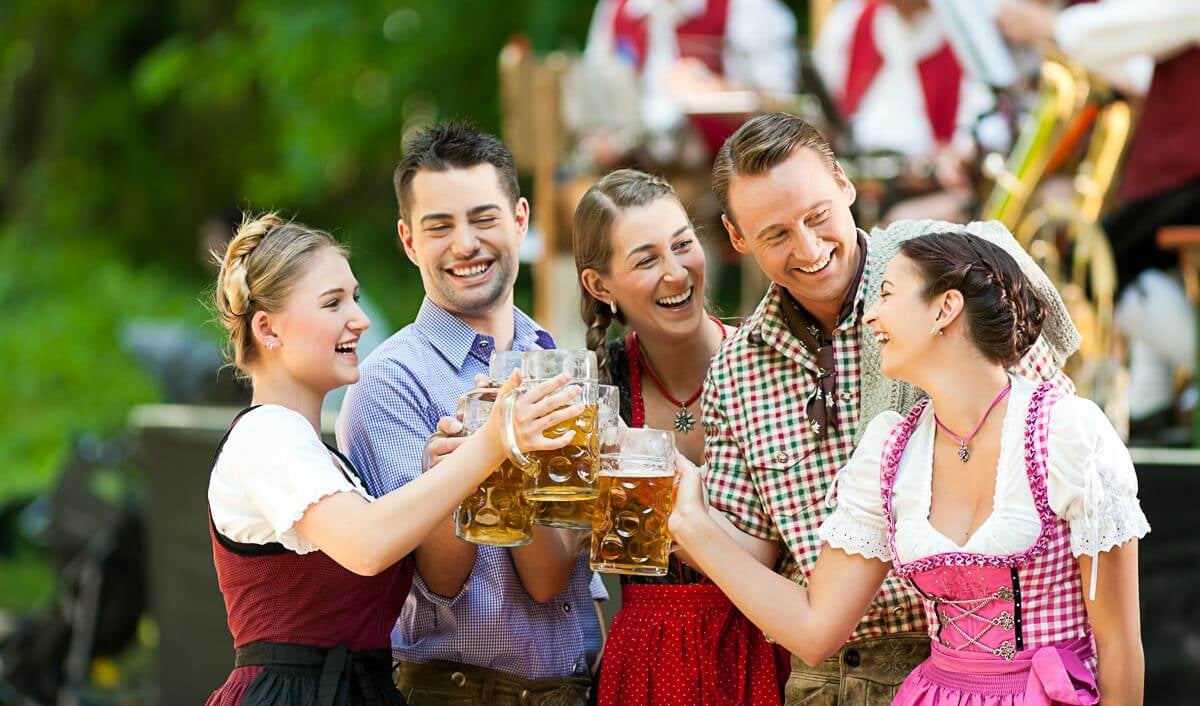
Table of contents - Beers from:
- Ale to Berliner Weisse
- Mixed beer to Eisbock
- Export to Helles
- Honey beer to crystal
- Lager to Quadrupel
- Radler to Sour Ale
- Strong beer to wheat beer
- Wheat Pale Ale to Zwickel
Not all beers are the same. This truism is widely known. But with so many different beer styles to choose from, it's hard not to lose track.
That's why we've put together an overview of the most important beer styles for you here:
Ale
Ale actually comes to us from the British Isles, but this well-known beer style now also has a fan base here. The taste is often rather fruity and has a strong aroma. Traditionally, ale does not contain any hops, but is mainly made from malted barley. The brew is fermented at temperatures between 15 and 25 degrees Celsius. These high temperatures make the brewing and fermentation process easier because the liquid does not have to be kept cool during fermentation (as is the case with pilsner, for example). Ale itself is therefore not a single, special type of beer, but a collective term for the fermentation process. In the UK, ale and beer are sometimes used interchangeably, which adds to the confusion. It usually has a rather dark color.
Top-fermented
Related to: -
Alcohol content: 3 to 10 % vol.
Widest distribution in: Great Britain, Belgium
Non-alcoholic beer
Contrary to its name, non-alcoholic beer is not necessarily alcohol-free. Up to 0.5% is permitted, after which the beer is no longer considered alcohol-free. With modern brewing processes, 0.01% is possible - but not less. Due to the low alcohol content, this beer has no effect on the body. However, pregnant women or former alcoholics are advised not to drink alcohol-free beer. There are practically no limits in terms of the type of beer: you can buy alcohol-free pilsners or lagers as well as wheat beers. For bottom-fermented varieties, however, the production process is much more complicated.
Top and bottom fermented
Related to: depending on the variety
Alcohol content: 0.01 to 0.5 % vol.
Widest distribution in: worldwide
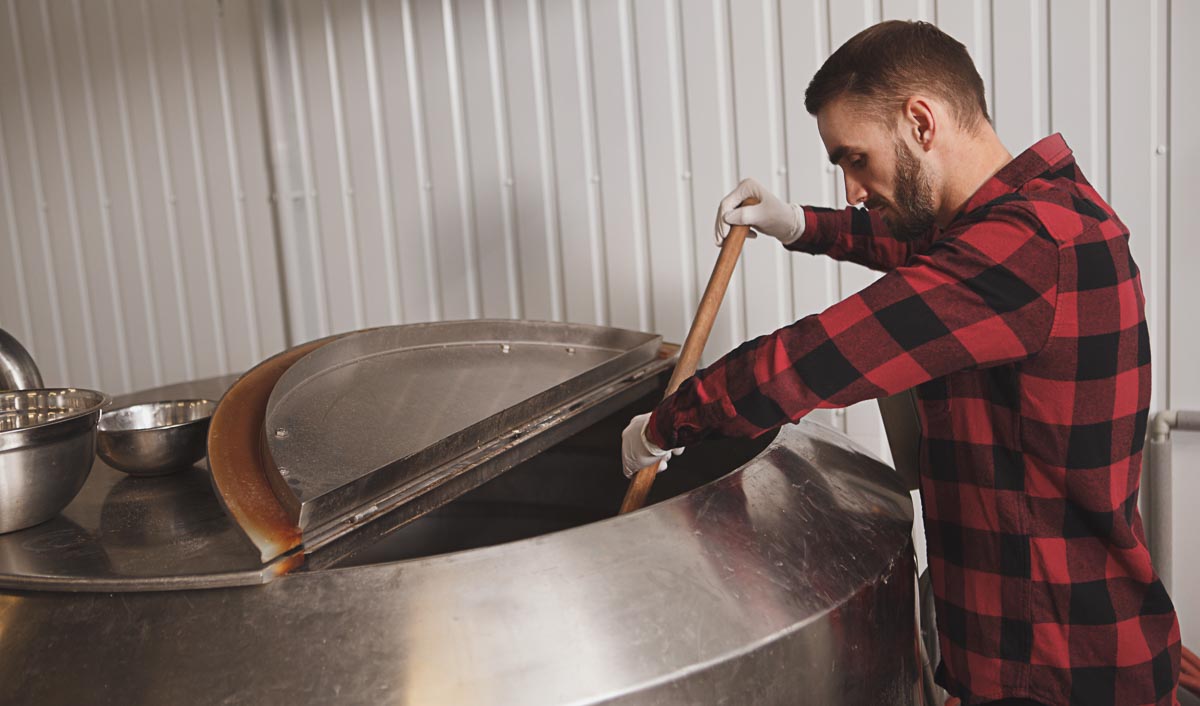
The name Altbier refers to the traditional production method for this type of beer.
Altbier
Altbier is not "old" or stored for a long time, but refers to a traditional, old brewing method. The top-fermented, rather dark beer originated in the north-west of Germany. Top-fermented Altbier yeast is used during the fermentation process. Compared to bottom-fermented beer, this allows a higher temperature during the fermentation process, which was an advantage until 1973 as there were no technical cooling facilities. In the mouth, it tastes slightly bitter and slightly nutty, and you will also notice a pronounced malt character. The bitterness comes from the yeast and hops content. In addition to Germany, there are a few breweries abroad, including in the USA, the Netherlands and even Taiwan, that brew this style.
Top-fermented
Related to: Kölsch, but slightly more bitter
Alcohol content: 4 to 5 % vol.
Most widespread in: Preferred in the Lower Rhine region and Westphalia
Amber ale
As the name suggests, amber ale has an appealing amber color. In the mouth, you will notice an intense hop flavor, but the beer is still rather light and characterized by a typical malt flavor. This balances out the bitter hops somewhat, resulting in a rounded taste. Amber ale is still very young among beers; the art of brewing this beer only began on the west coast of the USA in the 1980s. As caramel malts are often used, you may well be able to taste a sweetish character. There are many varieties of amber ales in the USA, but not all of them have made it to Germany yet.
Top-fermented
Related to: Pale ale
Alcohol content: 5 to 7 % vol.
Most widespread in: USA, Belgium
American Ale
American Ale is a generic term for numerous American beers. Sub-varieties of this top-fermented beer variant include Pale Ale, Amber Ale, Brown Ale, American IPA, American Stout and many more. The different styles develop various flavors: Sometimes the ale tastes rather hoppy, sometimes it has a pronounced malt character. At low fermentation temperatures, a hint of citrus can also be mixed in. The best-known variant is probably the pale ale, which looks light to amber in color and is clear and therefore somewhat reminiscent of a pale ale.
Top-fermented
Related to: various ale variants
Alcohol content: 4.5 to 7 % vol.
Widest distribution in: USA
American IPA
In the mouth, American IPA (short for India Pale Ale) tastes very bitter. You will notice a strong citrus flavor, sometimes it can also be somewhat exotically fruity. The top-fermented beer has a strong emphasis on hops, but a sufficient amount of malt provides a pleasant contrast to the otherwise bitter taste. The origins of this type of beer can be traced back to England in the 18th century, but it only became popular thanks to the craft beer movement in the USA. The alcohol content is relatively high, the beer is usually opaque and somewhat brownish in color.
Top-fermented
Related to: India Pale Ale
Alcohol content: 6 to 9 % vol.
Widest distribution in: USA
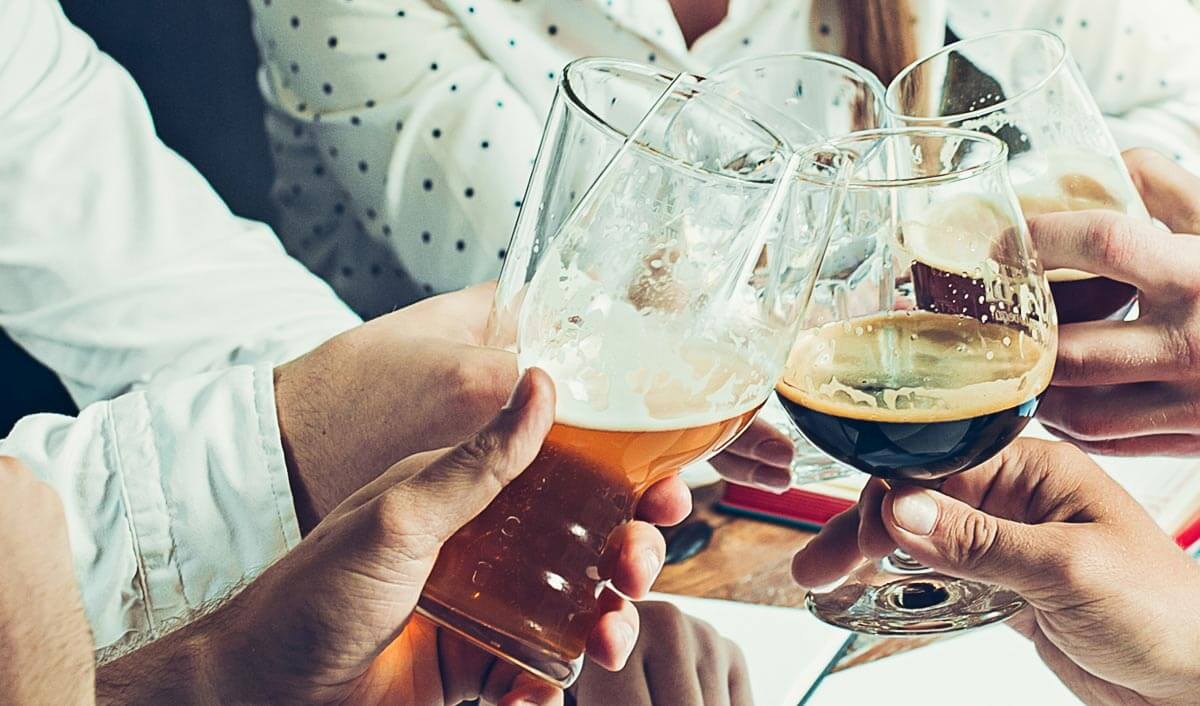
Barrel-aged beers can be both light and dark.
Barley Wine
This beer, which is particularly popular in winter, has its origins in France in the 18th century. The name is slightly misleading: wine is not added to Barley Wine, but a wine taste is nevertheless achieved. This is achieved through a high concentration of ale yeast, which is also used for many other ale beers. The color is brownish to very dark red. A sweet taste on first contact later changes to bitterness and a strong hop flavor. The alcohol content is exceptionally high for a beer, which is why it should be enjoyed in moderation. Variants with an aroma reminiscent of oak, wild berries or salt water are also in circulation.
Top-fermented
Related to: Similarity to wine
Alcohol content: 9 to 14% vol.
Most widespread in: France, Great Britain
Barrel aged / wood matured beers
As the name suggests, these beers are usually matured in a wooden barrel. As a result, it also absorbs the flavor of the wood. A wood-aged beer therefore tastes different depending on the region, as different woods are used for the maturing process everywhere. However, oak has become the standard in this art. A maturation period of several years is not unusual. The alcohol content varies greatly, and in terms of color you will find both lighter and darker beers.
Top and bottom fermented
Related to: Lager beer
Alcohol content: 5 to 8 % vol.
Most widespread in: Switzerland, Germany
Belgian ale
Belgian ale is either a collective term for all beers originating from Belgium or, in particular, an alternative term for amber ale. Beer in Belgium is extremely diverse and today comprises 500 different varieties; beer has been brewed in this region since before the Middle Ages. The vast majority of beers from Belgium are top-fermented: from beers reminiscent of the German Helle to dark beers, IPA variants and the special red beer, everything is represented. There are also less common beers in Belgium, such as Trappist beer, which can only be brewed in a monastery.
Mostly top-fermented
Related to: Amber ale
Alcohol content: varies depending on the type of beer
Most widespread in: Belgium
Berliner Weisse
As the name suggests, this is a beer from Berlin. It is very pale and light and tastes slightly sour. Yeast and lactic acid bacteria are responsible for this slightly sour aftertaste. It is important to note that only beers directly from our German capital are allowed to call themselves Berliner Weisse. The name Berliner Weisse is not permitted for any beer "from outside". It is not uncommon for the light and therefore quite refreshing beer to be mixed with fruit syrup. Its refreshing character also makes it a typical summer beer.
Top-fermented
Related to: Gose, among others
Alcohol content: 3 to 5 % vol.
Widest distribution in: in and around Berlin
Exciting beers ranging from Ale to Berliner Weisse:
Mixed beer drink
The mixed beer drink consists of one part beer and another part lemonade or similar soft drinks. They come in many varieties: they are made with pale or lager beer, with wheat beer (such as banana wheat) or with Altbier, Dunkelbier, Berliner Weisse, etc. As this type of beer has its origins in the private sector, there is no fixed limit - whatever tastes good is allowed. The mixing ratio determines the taste and alcohol content, among other things. The best-known variant in Germany is probably the Radler, which is usually made with lemonade and is popular as a refreshing drink in summer.
Top and bottom fermented
Related to: Radler
Alcohol content: depending on the mixing ratio
Most common in: everywhere in Germany
Blonde ale
Blonde or blond ale is, as the name suggests, pale blonde in color and has a comparatively low alcohol content. It is popular in the USA and emerged from the craft beer movement in the 1990s. It is brewed in a similar way to a Kölsch and is therefore just as easy to drink and popular in summer. The Williamette hop variety is used for the brewing process. Although you can taste the hops in the mouth, a sweetish malt note dominates. Occasionally the blonde ale also tastes fruity.
Top-fermented
Related to: Pale ale, Kölsch
Alcohol content: 4 to 5 % vol.
Most widespread in: USA, Belgium, France
Bock beer
Bock beer is a beer that is more suitable for the darker seasons. The rather heavy, alcoholic strong beer tastes malty and is prepared with a higher original wort content during the brewing process. Bock beer is available in both light and dark colors. In Franconia, autumn is even bock beer season every year. Festbock is popular at Christmas time, for example, while Doppelbock or Fastenbock is drunk during Lent. When the days get longer again, the lighter, hoppy Maibock is just around the corner in May.
Bottom-fermented
Related to: Märzen, among others
Alcohol content: 6 to 7 % vol.
Most widespread in: everywhere in Germany
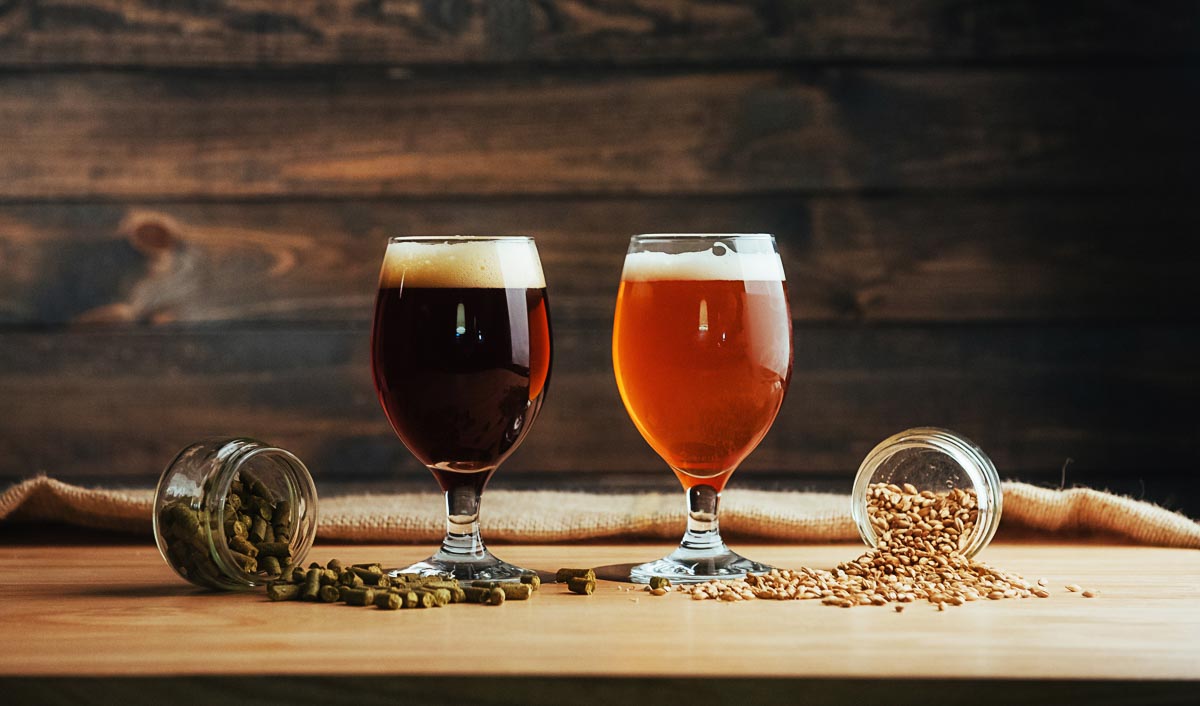
Ales are available in both light and dark varieties.
Brown ale
Brown ale is strongly malty and has a brown to amber color. A strong hop flavor is typical of this beer. Historically, brown ale is a beer with a very low alcohol content of just 3.5%. Today's American variants, however, are much higher. In Germany, brown ale is best compared to a Düsseldorf Altbier. The boundaries between brown ale and other types of beer can quickly become blurred. However, the strong hop flavor described above is a common feature shared by all beers of this type.
Top-fermented
Related to: Altbier
Alcohol content: 3.5 to 6.5 % vol.
Most widespread in: Belgium, USA, England
Brut Bière / Champagne beer
In the case of champagne beer, the beer undergoes a very long maturation process - just like champagne. This takes place directly in the bottle by adding wine or champagne yeast. The alcohol content is very high due to the long maturing process, and this beer is also rich in carbon dioxide and sparkles a little like champagne in the glass. This beer is available in both light and dark shades. Occasionally, notes of citrus fruit or honeydew melon can also be detected in the taste.
Bottom-fermented
Related to: Wine
Alcohol content: at least 9.5% vol.
Widest distribution in: France
Doppelbock
Doppelbock is a bock beer, but with a higher original wort content. The name goes back to an older part of the legislation: this stated that the Bock beer had to have an extract content of at least 16 degrees Plato, while the Doppelbock had to have at least 18 degrees Plato. Although this is no longer viewed so strictly today, the naming has remained the same. Apart from this detail, doppelbock does not differ significantly from bock beer.
Bottom-fermented
Related to: Bock beer
Alcohol content: 5 to 12 % vol.
Widest distribution in: Germany
Double IPA
The Double IPA is of course related to the normal Indian Pale Ale - but it offers a little more of everything. The top-fermented, heavily hopped beer is light in color and has a higher alcohol content due to the increased amount of grain malt. The beer also tastes slightly sweeter than the normal IPA. There are 15 grams of hops per liter of beer, which explains the hoppy taste. Due to the high sweetness, Double IPA sometimes tastes as if it has a lower alcohol content than normal IPA - so don't be fooled by this when you drink this beer for the first time.
Top-fermented
Related to: Indian Pale Ale
Alcohol content: 7 to 9 % vol.
Widest distribution in: England, USA
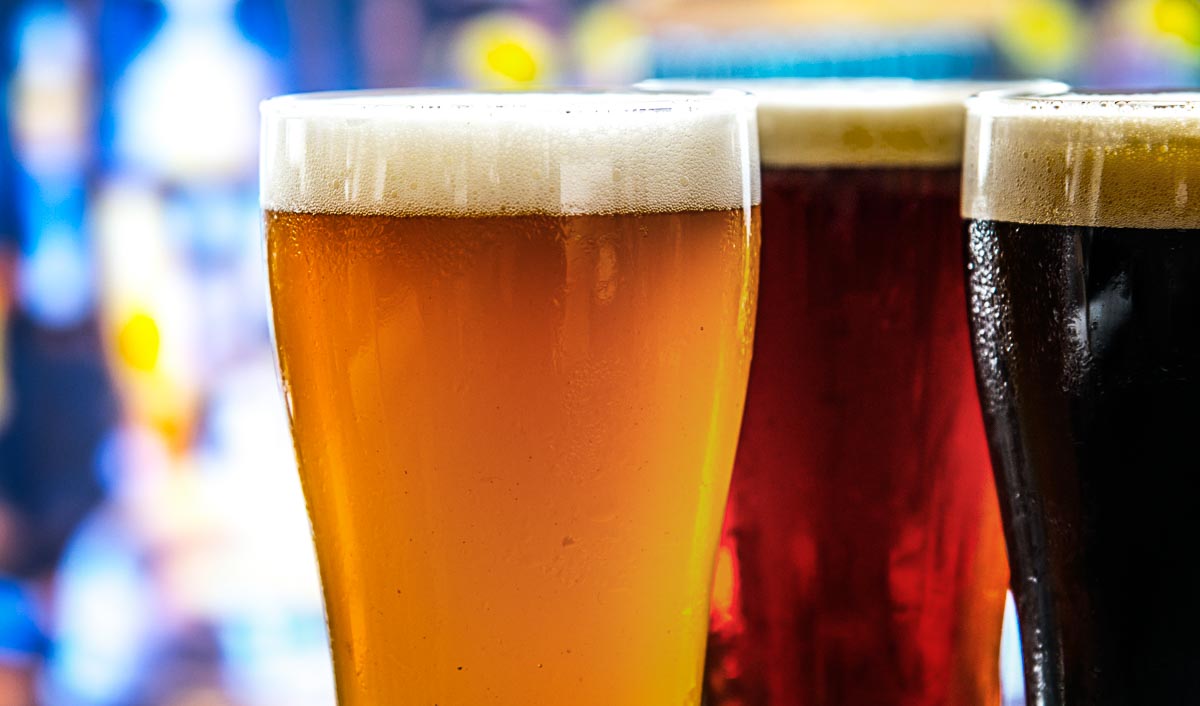
Double IPAs are somewhat stronger than normal India Pale Ales due to their higher malt content.
Dry Stout
Dry Stout is also known as Irish Stout, often tastes a little like coffee and dark chocolate and is generally rather bitter. You will also notice a strong malty taste in the mouth. It is practically black in the glass and has a creamy head when it is fresh. The dry stout is, as the name suggests, quite dry on the finish. You should also not drink it cold in the fridge: 12 to 13 degrees Celsius is ideal for dry stout. The rule of thumb for this beer is: the darker the beer, the warmer you should enjoy it.
Top-fermented
Related to: Porter, Stout
Alcohol content: 4 to 12% vol.
Widest distribution in: Great Britain, Ireland
Dark beer
Dark beer is popular in the south of Germany. It gets its dark color not from the malt content or the original wort, but from the color of the malt. In Europe, this value is measured in EBC. This term was given its name by the European Brewery Convention and refers to the amount of light absorbed by beer with a certain original wort content. A Pilsener, for example, comes to around 3 EBC, whereas the Dunkle from Munich already reaches 40 EBC. Certain other varieties, such as dry stout, exceed 100 ECB. There is no official limit in terms of color, but dark yellow and light brown beers with a strong malt flavor are expected.
Bottom-fermented
Related to: Bock beer, black beer
Alcohol content: 4 to 6 % vol.
Widest distribution in: Bavaria
Eisbock
Eisbock has been around since the late 19th century. The special feature of Eisbock is that water is removed from the beer by freezing it. However, all other substances - i.e. alcohol, flavorings, hops etc. - remain present. This gives the Eisbock a correspondingly explosive alcohol content: The record is 65% from Scotland. Expect this beer to have an extremely intense taste that can hardly be compared with any other beer.
Bottom fermented
Related to: Bock beer
Alcohol content: Usually between 5 and 11 % vol.
Widest distribution in: Southern Germany, Scotland
High-quality beer varieties from mixed beer drinks to Eisbock:
Export
Export was, unsurprisingly, actually brewed for export to other countries. For this reason, it was brewed stronger, as this increases the shelf life of the beer. It tastes quite tart, bitter and strong and therefore also became popular at the actual brewing locations of the beer. The alcohol content is slightly higher than that of related beers such as Hellen. Export is available both light and dark. It is refreshing, but sometimes tastes quite heavy, which is why you can drink it at any time.
Bottom-fermented
Related to: Helles
Alcohol content: 5 to 6 % vol.
Most common in: everywhere in Germany
Festive beer
With festival beer, the focus is less on the beer itself and more on the occasion. Different types of malt are used, sometimes even spices. Each brewery also has its own idea of what a festive beer should be. Typical occasions are perhaps Christmas and Oktoberfest, but it is also drunk in spring for all kinds of occasions. As it should also be pleasant to drink in the company of occasional beer drinkers, the alcohol content is usually not too high.
Top and bottom fermented
Related to: Christmas beer, Oktoberfest beer
Alcohol content: 5% vol.
Widest distribution in: Germany
Fruit beer
Fruit beer is a highly fermented beer in which fruit is added during fermentation. Accordingly, you can expect a fruity taste that is sometimes subtle and sometimes somewhat more pronounced. The bitterness, which comes from the hops, is rather incidental here. Fruit beers are brewed all over the world. Perhaps the best-known fruit beer is the Belgian lambic, which also exists without the addition of fruit, but has become known primarily for its fruit variants.
Top-fermented
Related to: Ales with added fruit, Lambic
Alcohol content: 5 to 8 % vol.
Widest distribution in: worldwide

Fruit beers are particularly enjoyable in summer with light meals.
Vegetable beer
This beer is also known as herbal or spiced beer. It is prepared by adding various spices, which sometimes only appear subliminally in the taste and sometimes are extremely noticeable. The ingredients vary greatly, so it is not possible to make a general statement about the taste. Ideally, beers of this type are accompanied and not dominated by the vegetable flavor.
Top and bottom fermented
Related to: Porter, Stout
Alcohol content: 5 to 8 % vol.
Widest distribution in: worldwide
Gose
Gose takes its name from the river Gose, which flows near Goslar. During production, the water from this river was used to brew the sour beer. Today, salt and a little coriander are added to achieve the original taste of Gose. Today, it is no longer just Goslar that is known as a brewing location, but also Leipzig, where Leipziger Gose is brewed. The pale, top-fermented beer has a lower alcohol content and is ideal as a refreshing beer in summer.
Top-fermented
Related to: Berliner Weisse
Alcohol content: 4 to 5 % vol.
Widest distribution in: in and around Goslar and Leipzig
Gueuze
This Belgian specialty, sometimes also spelled Geuze, is obtained by mixing slightly younger (about one year old) lambic with old lambic (which can be two to three years old). This mixture ends up in a bottle where a second spontaneous fermentation takes place. The aroma is correspondingly complex due to this mixture. However, vinegar notes and lactic acid usually accompany the taste. It must be stored in bottles for at least two years before it can be drunk. Gueuze is sealed with a cork. The storage period of up to 20 years is unusually long for a beer.
Top-fermented
Related to: Lambic
Alcohol content: 4 to 6 % vol.
Widest distribution in: Belgium
Grut
Grut, also known as gruit, is a mixture of herbs that is added to beer. If the beer is brewed with the gruit, it is called a gruit beer. It has been around for many centuries and is made with a wide variety of herbs. So expect a spicy, sometimes slightly fruity aroma - depending on the spice used. Incidentally, February 1 is the annual Grut Beer Day, which was established in the USA.
Top and bottom fermented
Related to: Vegetable beer
Alcohol content: 2.5 to 5.1 % vol.
Widest distribution in: German North Sea, Netherlands, Denmark
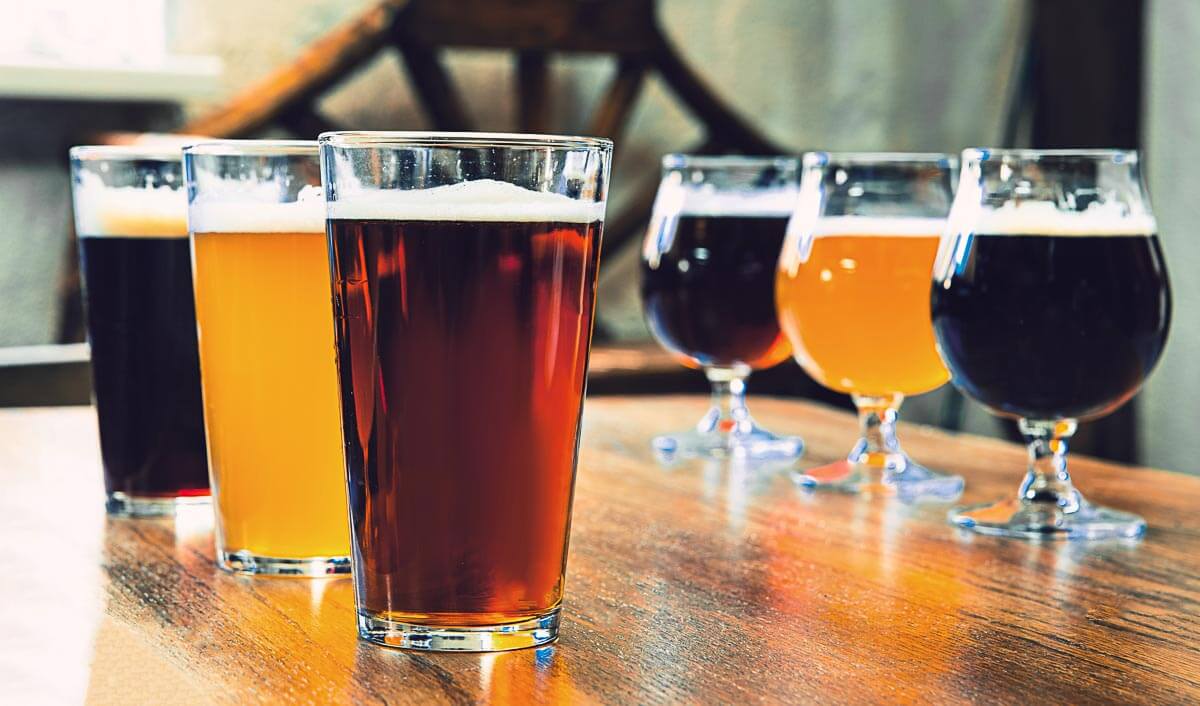
In contrast to the classic IPA, the Hazy or New England IPA is cloudy and significantly fruitier.
Hazy IPA
Hazy IPA has many names - including New England IPA (NEIPA) or East Coast IPA - and comes from the east coast of the USA. Unlike classic IPAs, this beer is "hazy" and therefore not transparent. The beer tastes light and delicious, the hops and therefore the bitterness only come into the mix very late. The result is a partly tropical, fruity taste that tastes good as a refreshment in summer, for example. The carbonation is also very pronounced in this type of beer.
Top-fermented
Related to: Indian Pale Ale
Alcohol content: 5.5 to 7.2 % vol.
Most widespread in: USA
Hefeweizen
Hefeweizen is cloudy and is the result of a mixed fermentation consisting partly of lactic acid bacteria and yeast. You can find more information about this beer style under Wheat.
Top-fermented
Related to: Witbier, among others
Alcohol content: 4 to 5 % vol.
Most widespread in: Germany, especially southern Germany
Helles
Helles - other names are Helles Lager or Münchner Helles - is a light, clear beer with a weak hop character. Compared to pilsner, it tastes even milder and the alcohol content is limited. Due to its good digestibility, Helles is one of the most popular beers in Germany, which should come as no surprise given its proximity to Pilsner. It is also particularly drinkable. If it is not filtered and therefore loses its pale look, the result is a cloudy cellar beer instead.
Bottom-fermented
Related to: Pilsner, Kellerbier
Alcohol content: 4.7 to 5.4 % vol.
Widest distribution in: Southern Germany
Great beers from Export to Helles
Honey beer
During the brewing process, the honey that gives honey beer its name is added. Nevertheless, it is not a sweet beer, as the sugar from the honey is also fermented, leaving only a light, sweet note. An alternative preparation is to pasteurize the beer and then add honey. Strictly speaking, however, this is a mixed beer drink - and it also tastes much sweeter as the sugar is retained.
Top-fermented
Related to: Honey wine, mead
Alcohol content: 4.9 to 8 % vol.
Most widespread in: Europe, especially Scandinavia
Imperial IPA
Imperial IPA is an alternative name for Double IPA.
Top-fermented
Related to: Indian Pale Ale
Alcohol content: 7 to 9 % vol.
Widest distribution in: England, USA
Imperial Pilsner
Imperial is a beer style that is particularly strong and hoppy. It has an extremely strong taste that is strongly dominated by hops. This rather strong beer cannot be drunk quickly; it is more suitable for slow consumption. The Imperial Pils is only slightly cloudy and should be drunk cold. The extraordinary bitterness requires an experienced palate.
Top-fermented
Related to: Pilsner
Alcohol content: 7.5 to 8.5 % vol.
Widest distribution in: Germany, Austria
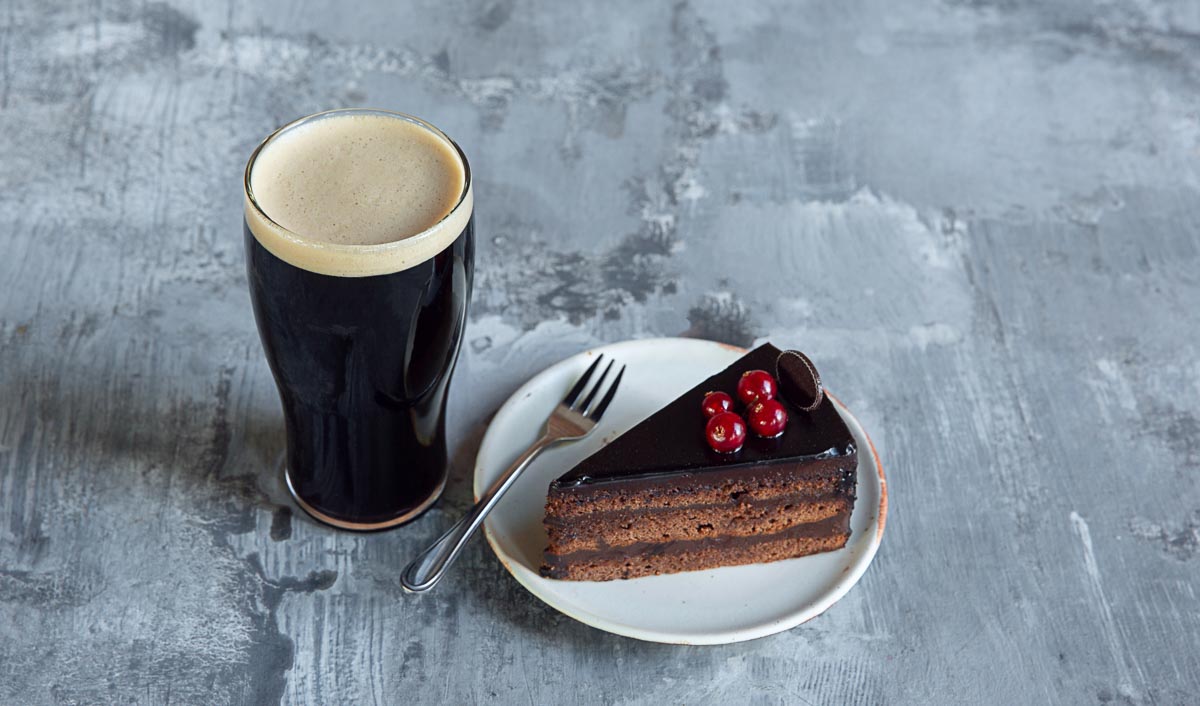
Stout is the darkest of all beer types - and often delights with a chocolaty taste.
Imperial Stout
The darkest beer of all is the Imperial Stout. It tastes extremely malty and appears almost completely black in the glass. It is more of a beer for the darker seasons. The Imperial Stout is also celebrating its rediscovery thanks to the craft beer movement. There is very little carbon dioxide in this type of beer. However, the high alcohol content prevents it from being consumed too quickly. You will look for foam on this beer almost in vain.
Top-fermented
Related to: Porter, Stout
Alcohol content: 8 to 12 % vol.
Widest distribution in: Great Britain, Ireland
India Pale Ale (IPA)
This very light-colored pale ale also comes from the trendy craft beer movement. The beer once developed from Oktoberbier. The taste is very strong and intense, and you can also expect a distinct fruity note. Additional hops are added during the maturing process to increase the bitterness. The alcohol content of IPAs is quite high and the beer is mainly produced in the USA, Scotland and England, although it is now also brewed in Germany.
Top-fermented
Related to: Oktoberbier, Pale Ale
Alcohol content: 6 to 9 % vol.
Most widespread in: USA, England, Scotland
India Pale Lager (IPL)
A hybrid of lager and Indian Pale Ale awaits you with Indian Pale Lager. American hop varieties with a very intense taste are used and the alcohol content is slightly higher than that of a normal lager. Due to the high hop content, beers of this type often taste somewhat tart to bitter and smell of citrus fruits. As is usual with lager beers, the malt flavor is unobtrusive. You will mainly taste bitterness in the finish. India Pale Lage is best enjoyed nice and cold.
Bottom-fermented
Related to: Lager beer, Indian Pale Ale
Alcohol content: 6 to 10 % vol.
Widest distribution in: USA, England
Cellar beer
Kellerbier is not stored, but served directly - it practically comes from the cellar, which gives the beer its name. The alternative name "Zwickel" goes back to the Zwickel tap. This was once used so that the master brewer could take a beer sample directly from the barrel. The beer tastes very drinkable and is low in carbon dioxide. It is also hardly hopped at all, which makes a big difference to Pilsner, for example. It can therefore be drunk quickly and enjoyed all year round. It does not have a long shelf life. The many cloudy substances also result in an opaque beer that is reminiscent of amber in color.
Bottom-fermented
Related to: Helles
Alcohol content: 4 to 6 % vol.
Widest distribution in: Franconia, southern Germany

Barley is a basic ingredient in beer brewing.
Kölsch
The pale and fairly light beer has a malty, mild taste that can sometimes even be fruity. The name Kölsch is reserved for breweries in the eponymous Cologne region; this name is not permitted in other places. Despite its top-fermented nature, this highly drinkable beer often tastes rather bottom-fermented. This is due to the production process: although Kölsch is fermented with top-fermenting yeasts, it is then stored in cold cellars for a long period of time, which is why it tastes so similar to lager. Kölsch is one of the best-known types of beer in Germany.
Top-fermented
Related to: Altbier, lager beer, among others
Alcohol content: 4 to 5 % vol.
Widest distribution in: in and around Cologne
Kräusen
The name Kräusen is derived from the beer wort of this beer: the fermenting beer wort - i.e. the liquid, fermentable part of the mash, which is produced by mixing water and malt - with its distinct foam formation looks a little like frizzy hair. Carbon dioxide is responsible for this foam formation. Before it is drunk, the Kräusenbier is given a portion of highly fermented young beer before it is left to mature. This takes place in barrels or bottles. The beer itself is always naturally cloudy and rather dark; the unfiltered beer also tastes pleasantly tangy. Unlike other beers, Kräusen beer should be shaken before opening so that the yeast is distributed more evenly.
Top and bottom fermented
Related to: Lager
Alcohol content: 4 to 7 % vol.
Widest distribution in: Germany
Herbal and spiced beer
Herbal and spice beer is another name for vegetable beer.
Top and bottom fermented
Related to: Porter, Stout
Alcohol content: 5 to 8 % vol.
Widest distribution in: worldwide
Crystal
Kristall or crystal wheat is largely similar to wheat. It is highly carbonated and transparent - unlike Hefeweizen. The yeast is filtered out, as are other suspended particles. The beer therefore has at most a very low yeast content and therefore does not taste of it. Some connoisseurs drink Kristallweizen with a slice of lemon - others believe that this distorts the taste. For you personally, of course, whatever tastes good is allowed.
Top-fermented
Related to: Witbier, among others
Alcohol content: 4.6 to 5.9 % vol.
Most widespread in: Germany, especially southern Germany
Delicious beer varieties from honey beer to crystal:
Lager
Lager or lager beer was first invented in 1839. As it requires very cold temperatures for the production process, the beer could previously only be produced in the winter months. Today, lager is available all year round. In terms of taste, you can expect a mild, easy-drinking beer that is almost a little sweet due to the low hoppiness. The name comes from the lagering process, which used to allow the beer to last a whole year. In English-speaking countries, however, lager is a term for all bottom-fermented beers and not just German lager in particular.
Bottom-fermented
Related to: Export (but less hopped)
Alcohol content: 4.5 to 5.6% vol.
Widest distribution in: Southern Germany, Austria, England, USA
Lambic
Water, malt and hops are also used in lambic, but no yeast is used. This ensures spontaneous fermentation, as the finished brew is simply left open. This allows the yeast, which circulates freely in the air, to collect in each brew. Lambic is then stored in chestnut or oak barrels. Fermentation takes up to six months. The result is an extremely dry beer that is often mixed with fruit. The carbon dioxide content is low and it is quite quick and pleasant to drink.
Top-fermented
Related to: Gueuze
Alcohol content: around 5% vol.
Widest distribution in: Belgium
Light beer
The "light" suffix alludes to the alcohol content, which is lower than in other beers due to the special production process of this beer. During fermentation, less original wort is added or fermentation is interrupted in order to achieve the low alcohol content. It should not be confused with "light beer" in the USA, where the name only alludes to the calorific value.
Top-fermented
Related to: -
Alcohol content: 1.2 to 3 % vol.
Most widespread in: worldwide, particularly widespread in Scandinavia

Brewers invented Märzen beer in order to be able to serve beer in the summer despite their former professional ban.
Märzen
Märzen is drunk in the region from southern Germany to Austria. It is a very malty beer style that is quite sweet and full-bodied. You can generally drink it at any time of year - unlike in the past. Originally, Märzen was brewed in March so that it could be drunk in summer. This goes back to a ban that prohibited brewers from going to work in summer. The remains of the stored beer from March were then drunk in summer, which is why it was given the name Märzen. It is easily recognizable by its amber color.
Bottom-fermented
Related to: Bock beer, among others
Alcohol content: 5 to 6 % vol.
Widest distribution in: Southern Germany
Milk Stout
Milk Stout is largely similar to Dry Stout or Irish Stout. However, lactose is added instead of milk. This creates a distinct, sweetish note. Even with lactose, the beer is almost black and develops a very full flavor in the mouth. The carbon dioxide content is exceptionally low. The beer was developed in 1875 and has a niche existence in Germany, but Milk Stout is well known in the British Isles.
Top-fermented
Related to: Dry Stout
Alcohol content: around 6 % vol.
Most widespread in: Great Britain, especially Ireland
New England IPA
New England IPA is another name for Hazy IPA. Just have a look there to find out more about this beer style.
Top-fermented
Related to: Indian Pale Ale
Alcohol content: 5.5 to 7.2 % vol.
Widest distribution in: USA
Oktoberfest beer
As the name suggests, this beer is brewed especially for the Oktoberfest. Oktoberfest beer has a very high alcohol content. Only six breweries in Germany are allowed to brew this beer and call it that: Paulaner, Löwenbräu, Augustiner, Spatenbräu, Hacker Pschorr and Hofbräu. In the mouth, this bottom-fermented beer is very drinkable with a distinct malty note. It is therefore also reminiscent of a somewhat stronger pale beer. Other breweries are also allowed to brew beers of this type, but the use of the name is not permitted.
Bottom-fermented
Related to: Märzen, among others
Alcohol content: 5.8 to 6.3 % vol.
Most widespread in: Southern Germany, especially Oktoberfest
Pale ale
Pale ale consists largely of pale malt, which explains its light brown, almost transparent color. Pale ale originated in the early 18th century: At that time, the name was used for light-colored beers that were given their color by drying the malt with coke. The term pale ale had been in use since 1703. 100 years later, the beer was already available everywhere in England. Top-fermented beer is fermented at up to 25° Celsius or more. It is now drunk all over the world and many countries have developed their own versions of Pale Ales. You can assume that pale ale always tends to have a hoppier taste. Aroma hops make the beer more fruity, while bitter hops provide the well-known bitter and bitter note in beer - similar to the best-known type of beer in Germany, Pilsner.
Top-fermented
Related to: IPA, American Ale
Alcohol content: 5 to 8 % vol.
Most widespread in: Great Britain
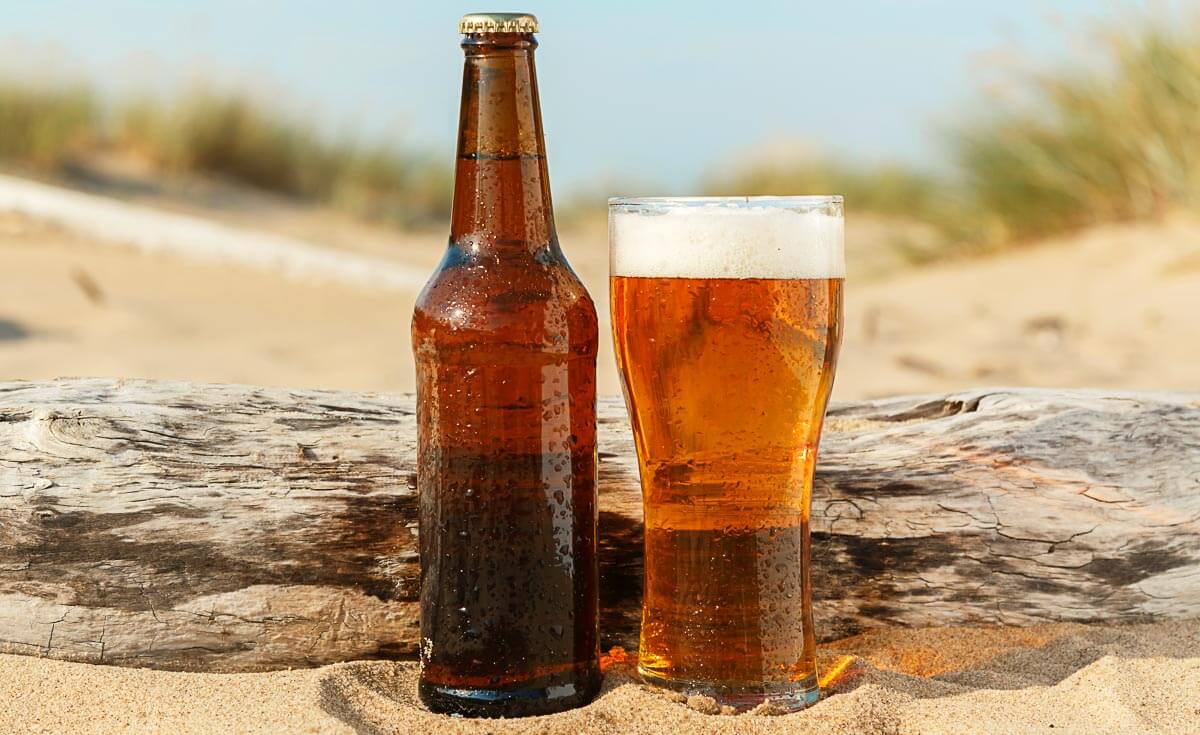
Pilsner is the most popular type of beer in Germany.
Pilsner / Pilsner
Anyone who has ever drunk beer has also drunk the generally bitter and tart Pilsner. This type of beer is the most popular variety in Germany. It is named after the Czech city of Pilsen, but the beer was invented by master brewer Josef Groll from Bavaria. This also explains why the beer is drunk even more often in the Czech Republic than in Germany. The coloring is reminiscent of liquid gold, it also tingles strongly and leaves a dry note in the mouth. The beer is often quite bitter, but occasionally also slightly sweet, depending on the brewery.
Bottom-fermented
Related to: Helles
Alcohol content: 4 to 5 % vol.
Widest distribution in: Czech Republic, Germany
Porter
Porter is very dark to almost black, tastes very malty and sometimes also like roasted malt. The traditional taste, on the other hand, is rather bitter and tart, which is due to the high hop content. The definition of porter varies from country to country: in England, for example, porter is top-fermented and stops at 5% alcohol. A creamy head and an average carbon dioxide content are distinguishing features of porter.
Bottom-fermented
Related to: Irish stout
Alcohol content: 7 to 9 % vol. (in Germany)
Widest distribution in: Germany, Baltic Sea region
Quadrupel
Quadrupel is a collective term for Belgian beers that are heavy and dark and were originally brewed in monasteries and by Trappists. The best-known beer of this type comes from the west of Flanders, where it is only sold in a single abbey. It tastes strongly malty, a little like roasted malts and is accompanied by a hint of caramel. You won't find any bitter hoppiness here, but you will find a significantly higher alcohol content than with other types of beer.
Top-fermented
Related to: Trappist beer
Alcohol content: 9 to 13 % vol.
Widest distribution in: Belgium
Beer varieties from lager to quadrupel
Radler
Radler is by far the best-known mixed beer drink in Germany. Depending on the region, it is also called Alster or Alsterwasser. In this country, Pilsner is generally used, which is then mixed with lemonade à la Sprite. The alcohol content therefore depends heavily on the mixing ratio. Radler is a popular beer, especially in summer, and is often drunk as a refreshment. Due to its low alcohol content, it is drunk with all kinds of food without causing intoxication.
Top-fermented
Related to: Mixed beer drinks
Alcohol content: variable
Most widespread in: Germany, Austria
Smoked beer
The name of this Middle Franconian specialty is derived from the brewing process: smoked malt (i.e. malt dried over a fire) is used. However, the basic recipe and the brewing process itself are very similar to Märzen. The result is a beer that tastes like malt but has a smoky character. The taste is therefore also somewhat reminiscent of smoked bacon. It is usually drunk in winter.
Related to: Märzen, among others
Alcohol content: 4 to 6 % vol.
Widest distribution in: Franconia, southern Germany
Red ale
Compared to Pale Ale, Red Ale contains much more special, red-colored malt. This reddish malt gives red ale its name-giving color. The roots of this type of beer can be traced back to Ireland, but the beer only really became popular in the USA. The taste is strongly dominated by malt, in keeping with the ingredients. It is best drunk not too cold, but at around 10° Celsius. The beer has quite a lot of carbon dioxide, which makes it a good refresher in summer.
Top-fermented
Related to: Pale ale
Alcohol content: 4.5% vol.
Widest distribution in: Ireland, USA
Rice beer
Rice beer is gluten-free and may therefore appeal to some people. The rice content in this beer can be clearly tasted, and the smell is already strongly reminiscent of sake (i.e. rice wine). If you have ever drunk sake, you will be familiar with the aftertaste of rice beer: It tastes like sake, but drier and mixed with some tart hops. It is rather dull in color. Rice beer is not yet widespread in this country.
Top-fermented
Related to: Sake
Alcohol content: 4.3 to 6 % vol.
Most widespread in: China
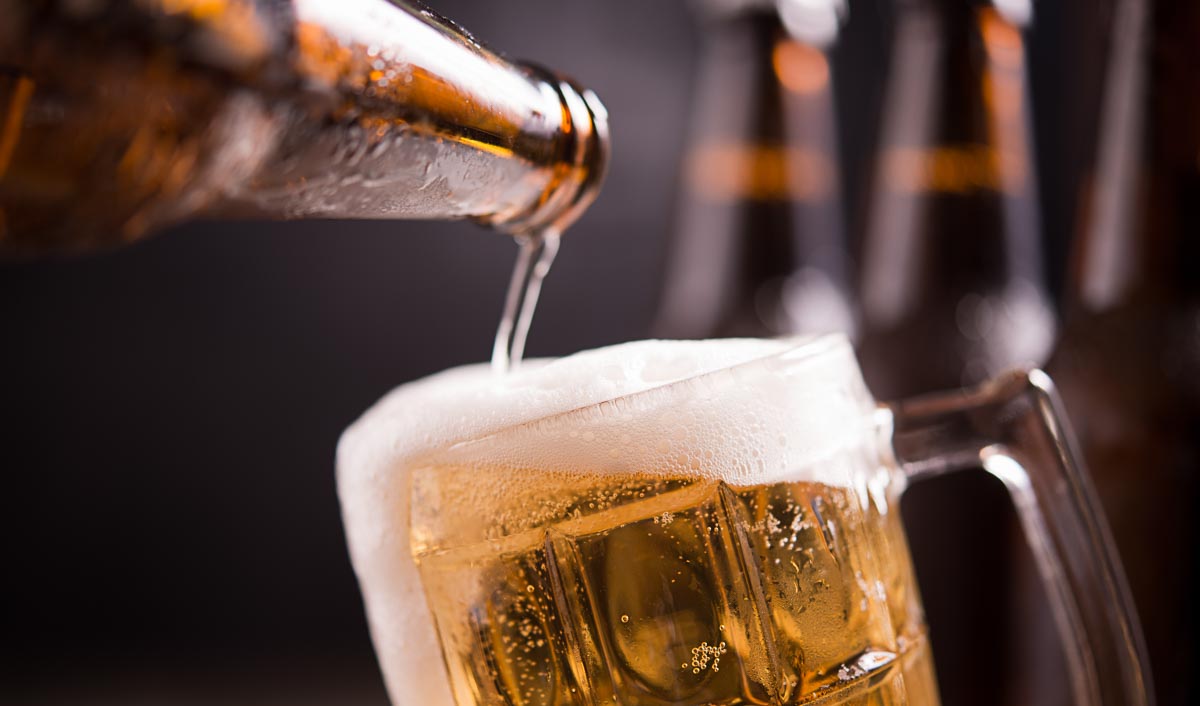
Seasonal beer often tastes a little like pear.
Saison beer
Saison beer is sometimes also known as Farmhouse Ale. This traditional Belgian beer style was actually only brewed for seasonal workers during the winter months, which explains the name. Saison beer is straw yellow in color, usually clear and often tastes a little like pear. It is rather mild and does not taste very hoppy. The dry, refreshing character of Saison beer makes it an ideal companion for the summer.
Top-fermented
Related to: Belgian ale
Alcohol content: 3 to 8 % vol.
Widest distribution in: France, Belgium, USA
Sour beer
All sour-tasting beers are generally referred to as sour beer. Lactic acid and yeast bacteria are usually responsible for this, as they give the beer its sour taste during fermentation. Well-known beers in Germany include Berliner Weisse and Gose from Leipzig or Goslar. The beer is also very popular across national borders in Belgium, where it takes the form of Gueuze and Lambic. Recently, this refreshing and lively beer has been celebrating a small comeback in Germany.
Bottom-fermented
Related to: Berliner Weisse, Lambic
Alcohol content: 4 to 7% vol.
Widest distribution in: Germany and Belgium in general
Black beer
Black beer originated in Saxony and Thuringia. In order to preserve the typical aroma - coffee and chocolate are frequently mentioned alongside malts - the beer is brewed together with roasted malts. Despite the visual similarity to porter and the comparable taste, it is a completely different beer, as black beer is bottom-fermented (compared to top-fermented porter). The dark, malty taste makes this beer more of a winter beer.
Bottom-fermented
Related to: Dark beer
Alcohol content: 4 to 5 % vol.
Most common in: Eastern regions of Germany

The taste of a beer is usually characterized by the hops used.
Session IPA
Session IPA is sometimes referred to as the IPA's little brother. This lighter version of IPA has less alcohol and tastes quite fruity and less hoppy. You can drink this style well in summer, as it is very refreshing. Hop varieties from North America are usually used. You will also notice a certain taste of tropical fruits and lemons.
Top-fermented
Related to: Indian Pale Ale
Alcohol content: 4 to 5 % vol.
Widest distribution in: USA
Summer beer
Varieties such as Amarillo or Hallertauer Perle are often used as hop varieties for summer beer. It has a summery, fruity taste and is best enjoyed cold. The beer is clear and light and has an intense aroma. Thanks to its comparatively low alcohol content, you can also drink this beer as a refreshment between meals in summer.
Top-fermented
Related to: Pilsner, fruit beer
Alcohol content: 2.9 to 5 % vol.
Most widespread in: Southern Germany, but also in the rest of the world
Sour ale
Sour ale is fermented spontaneously and is similar to sour beer and/or lambic. As the name suggests, you should be prepared for a sour taste when drinking this type of beer.
Top-fermented
Related to: Fruit beer, Gueuze
Alcohol content: around 5% vol.
Widest distribution in: Belgium
Beer varieties from Radler to Sour Ale
Strong beer
Strong beer is not a beer style in its own right, but a whole genre of beers. The prerequisite is that the original wort content must be at least 16 degrees Plato. The alcohol content is high: for example, there are beers with an alcohol content of 65%. As a rule, however, strong beers are of course much lower. But always be prepared for a strong, intense taste that lives up to the genre of this beer.
Top and bottom fermented
Related to: Bockbier, Eisbock, Weizenbock, Imperial Stout
Alcohol content: 7 to 14% vol.
Widest distribution in: Germany, Great Britain
Stout
Stout is the equivalent of Irish stout or dry stout. If you are looking for a heavy, dark beer for cold seasons, you will find it here.
Top-fermented
Related to: Porter
Alcohol content: 4 to 12 % vol.
Widest distribution in: Great Britain, Ireland
Strong Ale
Strong ale is another name for strong beer. Just read on if you want to find out more.
Top and bottom fermented
Related to: Bockbier, Eisbock, Weizenbock, Imperial Stout
Alcohol content: 7 to 14% vol.
Most widespread in: Great Britain, USA, English-speaking countries in general

Trappist beer may only be brewed by monks or under their supervision.
Trappist beer
Trappist beer is either brewed directly by monks - in a Trappist monastery - or under the supervision of the monks. The proceeds from the sale must be donated to social causes. Trappist beers were once very rare, as there are only eleven breweries in the world that produce this beer at all. Today, the beer is also sold outside the monastery walls.
Mostly top-fermented
Related to: Quadrupel
Alcohol content: 6 to 12% vol.
Widest distribution in: Holland, Belgium
Tripel
This heavy, alcohol-heavy beer style achieves its effect through strong fermentation during brewing, which is then intensified in the bottle by a second fermentation process. It usually tastes malty and sweet, occasionally bitter and always has a strong fruity note. There is some disagreement about the history of its origins: some speak of the Middle Ages, others blame the year 1934 and Westmalle Abbey. The low carbon dioxide content makes the Tripel very pleasant to drink, although the high alcohol content of the beer should not be ignored.
Top-fermented
Related to: Trappist beer
Alcohol content: 7 to 11% vol.
Widest distribution in: Belgium
Triple IPA
This IPA is very bitter, but at the same time has a high malt sweetness, which creates an interesting contrast on the tongue. Variants such as the New England Triple IPA take away the bitterness of this beer. The alcohol content is quite high. You can also expect an intense aroma produced by North American hop varieties. Sometimes you will also taste mango, pineapple and similar exotic fruits in this exciting beer. Visually, the beer is somewhat cloudy, reminiscent of a Hazy IPA.
Top-fermented
Related to: Indian Pale Ale, Hazy IPA
Alcohol content: 10 % vol.
Widest distribution in: USA
Full-bodied beer
Full-bodied beer refers to beer varieties with an original gravity of 11 to 16 °Plato. In Germany, these are very well-known types of beer, such as Pilsener, Kölsch, wheat and others.
95% of all beers sold in Germany are full beers. Other types are single beers, draught beers and strong beers. Due to the incredible number of full beers, it is not possible to specify an exact taste spectrum - there is guaranteed to be a full beer that you like.
Top and bottom fermented
Related to: Lager, Helles, Pilsner
Alcohol content: 3 to 5 % vol.
Widest distribution in: worldwide
Christmas beer
Christmas beer does not refer to a specific style, but is a collective term for beers that are enjoyed in winter or generally in the darker seasons. A Christmas beer usually has a higher alcohol content, is rather heavy and dark. Typical beers for this season are stouts and porters. The taste is usually defined by malt and enhanced by Christmas spices.
Top and bottom fermented
Related to: Festbier, winter beer, bock beer, dry stout, porter
Alcohol content: 7 to 13% vol.
Widest distribution in: Germany
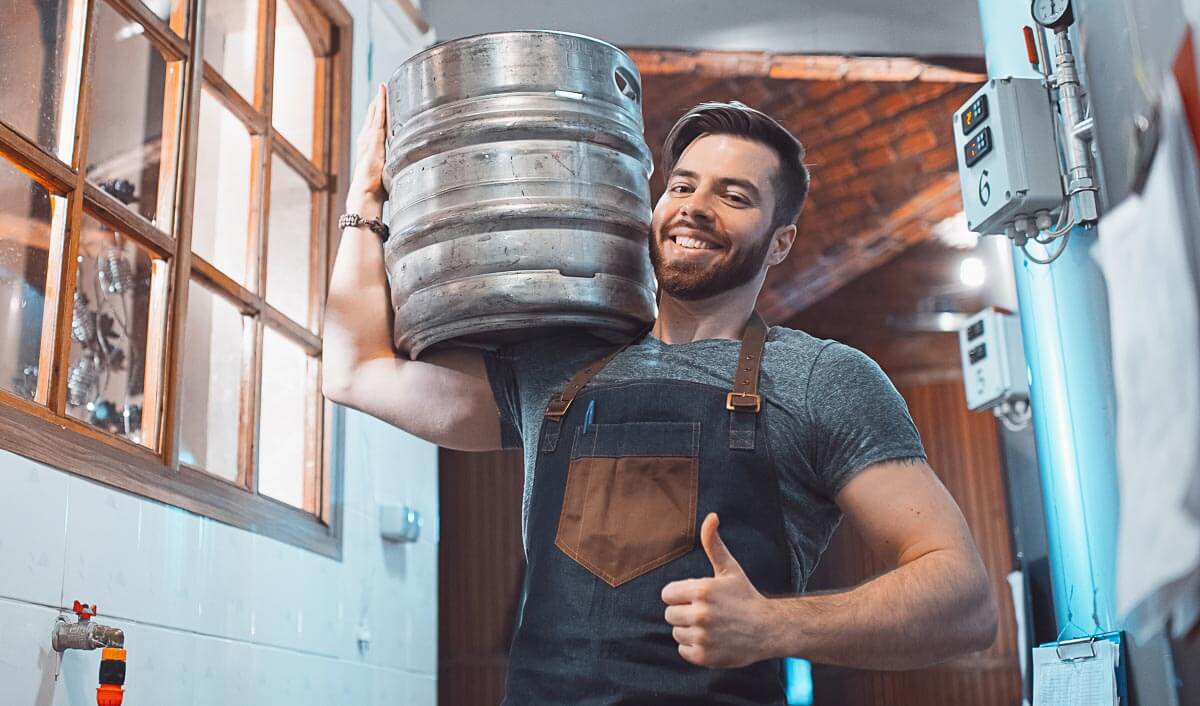
Wheat beer must be brewed with at least 50% wheat malt.
White beer
Weissbier is another name for wheat beer and is used particularly frequently in Bavaria. For a detailed description, you should take a look at our entry on wheat.
Top-fermented
Related to: Witbier, among others
Alcohol content: 4 to 5 % vol.
Widest distribution in: Germany, especially southern Germany
Wheat
The popular wheat beer is at home everywhere in Germany and is particularly popular in southern Germany. It tastes rather sweet and full-bodied and is very refreshing. It is therefore a popular beer in summer. The impressive head is a distinguishing feature of wheat beer. In order for the beer to bear its name, it is brewed with at least 50% wheat malt. Yeast is also an important ingredient, as it is responsible for the sweetish touch described above. Aromas such as banana and cloves are not uncommon when you drink a wheat beer.
Top-fermented
Related to: Witbier, among others
Alcohol content: 4 to 5 % vol.
Most widespread in: Germany, especially southern Germany
Delicious beer varieties from strong beer to wheat
Wheat Pale Ale / Wheat Pale Ale
Wheat or wheat pale ale is a hybrid of wheat and pale ale. It tastes heavier and maltier than the normally more refreshing Pale Ale, which is due to the yeast content. At the same time, it is more bitter than a normal wheat beer. This beer is exciting because it harmonizes both styles and is an exciting change of pace, especially in summer.
Top-fermented
Related to: Indian Pale Ale, Wheat
Alcohol content: around 5% vol.
Widest distribution in: USA, Germany
West Coast IPA
West Coast IPA is golden yellow to amber in color and has very little malt flavor. The hop flavor is extremely intense, resulting in a high bitterness. You will probably taste some hints of tropical notes, but this beer is dominated by herbs and a resin flavor. If you can handle the bitterness, the West Coast IPA may be the right beer for you in the colder seasons. As the name suggests, it originated on the west coast of the USA.
Top-fermented
Related to: Indian Pale Ale
Alcohol content: 5 to 8 % vol.
Widest distribution in: West coast of the USA
West Coast Double IPA
For the West Coast Double IPA, it is best to refer to our article on the West Coast IPA. The Double IPA is practically identical - but it tastes even more bitter and has even more alcohol.
Top-fermented
Related to: West Coast IPA
Alcohol content: 6 to 11 % vol.
Widest distribution in: West coast of the USA
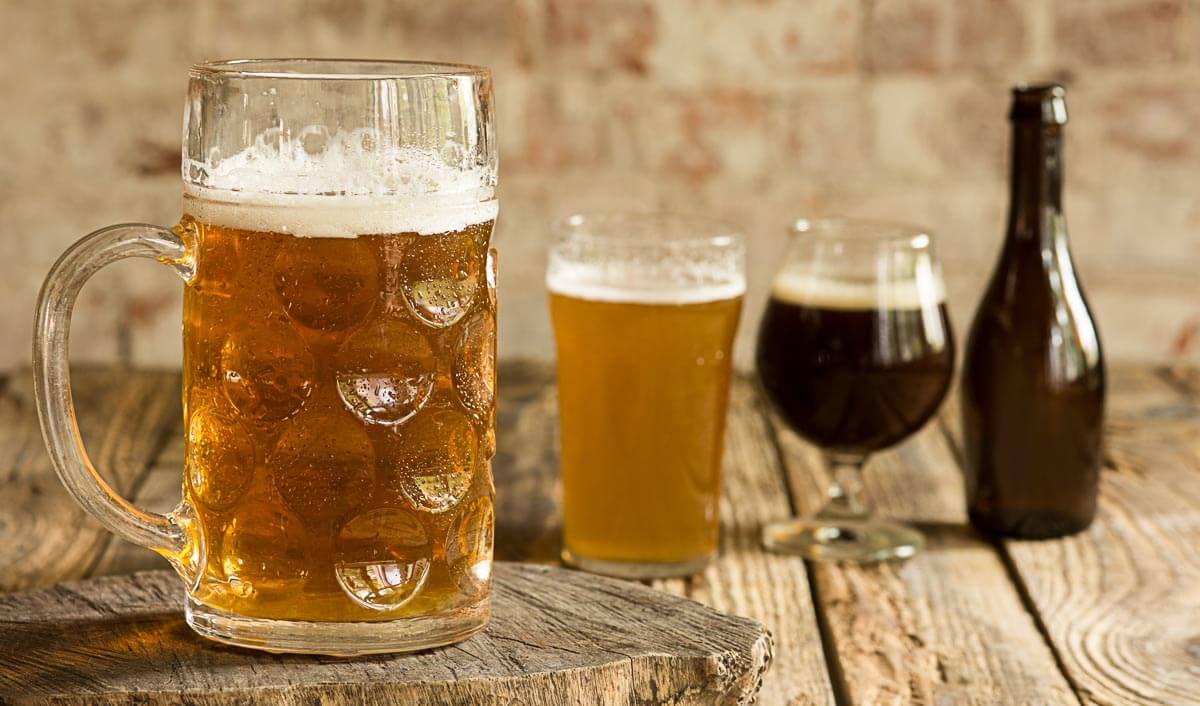
For some types of beer, there are special glasses from which they are drunk.
Winter beer
Winter beer is another name for Christmas beer and describes types of beer that are well suited to this time of year.
Top and bottom fermented
Related to: Festbier, bock beer, dry stout, porter
Alcohol content: 7 to 13% vol.
Widest distribution in: Germany
Winterbock
Winterbock is a bock beer that goes well with winter and is therefore a typical winter beer. Find out more about this style in the link!
Top and bottom fermented
Related to: Festbier, winter beer, bock beer, dry stout, porter
Alcohol content: 7 to 11 % vol.
Widest distribution in: Germany
Wit
Witbier originated in Belgium and has a strong yeasty aroma in the mouth. After the beer style disappeared in the 1950s, it made a comeback in the 1960s. It consists of half unmalted wheat and is flavored with coriander and orange peel during the brewing phase. The hop flavor is restrained, resulting in a mild, rather fruity and spicy beer. The alcohol content is low, reaching a maximum of 5% by volume, making it ideal as a refreshment. Wit tastes best at 6° to 8° Celsius.
Top-fermented
Related to: Wheat, Crystal
Alcohol content: 3 to 5 % vol.
Widest distribution in: Belgium
Zwickel
Zwickel is another name for cellar beer. Please take a look at our article on Kellerbier.
Bottom-fermented
Related to: Helles
Alcohol content: 4 to 6 % vol.
Most widespread in: Franconia, Southern Germany
Exciting beers from Wheat Pale Ale to Zwickel
Matching products to the article
Recent articles
-
24 JulDrinks advent calendar: The best gin, whisky & beer calendars for the pre-Christmas period
-
24 Jul"The quality of Languedoc wines simply amazed me" - An interview with two noses for wine
-
10 JulLimoncello - All about the Italian lemon liqueur
-
10 JulAll about lemonade - a world-famous classic
-
18 JunMarder Edelbrände: Germany's best single malt whisky
-
06 JunEuro 2024: Beer, soccer and singing!
-
06 JunThe 11 best gins for the 2024 European Championship summer
-
29 MayThe art of fermentation: discover the amazing benefits for your health
-
28 May"It sounds crazy, but it tastes fantastic!" - Interview with a pizza chef
Brilliant!

Bitte bestätige deine Anmeldung noch eben - du hast eine Bestätigungsmail von uns. Klicke darin auf den Link. Danach bekommst du deinen Rabattgutschein.


